Yoko Ota
(1928-2024)
Hon FRSNZ, DSc (Tokyo)
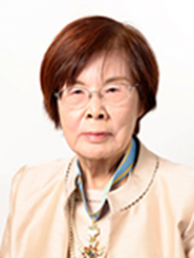
Yoko Ota (Honorary Fellow RSNZ) was a global pioneer woman geomorphologist. She died on March 30th, 2024, aged 95. Yoko was an academic and social pioneer and renowned explorer of the Earth’s geography and landforms. She made a significant contribution to Quaternary research in New Zealand and internationally where she influenced many people’s careers and established long-term friendships in many countries.
Yoko was born in Tokyo on August 7th 1928. She graduated with a batchelor’s degree from the Department of Geography, Tokyo University of Literature and Science in 1952. She received her doctorate in geography in 1960 from the Department of Science, Tokyo University of Education. These were rare accomplishments for a woman in Japan in this era. She was supported by her husband Isamu (himself a noted social science researcher who passed away more than 20 years ago) and an enlightened small cadre of senior male researchers who supported this rising star of geomorphology. She obtained a position at Yokohama National University and published her first paper in 1962 and the last in 2022 – a remarkable publishing span of 60 years. Yoko was at Yokohama National University until 1994 when compulsory ‘retirement’ at age 65 in the national university system saw her move to a private university as a professor in the Faculty of Arts at Senshu University where she remained until 2000.
The Chi-Chi earthquake in Taiwan in 1999 had a major impact on the latter part of Yoko’s career. During her post-earthquake visits she saw that the improved appreciation of geomorphology and earthquake geology in fault studies in Taiwan presented an opportunity to enhance the long earthquake record on this tectonically active island. She visited many times and was, from 2000 to 2008, a distinguished visiting professor at the National Taiwan University where she greatly influenced Quaternary tectonic studies. Since 2009, she was also an emeritus professor at Yokohama National University.
Yoko’s New Zealand connection began in 1971 when she met Gerald Lensen (NZ Geological Survey) in Japan when he was on a Churchill Fellowship investigating earth deformation research in England, USSR, USA and Japan. Discussions with Yoko while on field trips and in a lecture in Tokyo where Gerald described New Zealand as a "paradise for the study of earth deformation" piqued her interest. It was clear to Yoko that there were many similarities in the recent tectonic history of New Zealand and Japan. Gerald Lensen, supported by Pat Suggate, FRSNZ, encouraged her to come to New Zealand on study leave from Yokohama National University. She did so in 1973 and began a study of the marine terraces in the Wellington region (Williams et al., 1981), based in the Earth Deformation Section of NZ Geological Survey in Lower Hutt. During this first visit she attended the 9th INQUA conference in Christchurch to present a paper on Late Quaternary Vertical Movement in Japan Estimated from Deformed Shorelines. (Royal Society NZ Bull 13: 231-239).
Yoko returned to New Zealand in 1975 on sabbatical with the Earth Deformation Section of NZGS. She visited many parts of New Zealand where she saw that comprehensive documentation of the uplifted and deformed marine terraces along eastern North Island and northeast South Island had the potential to contribute significantly to emerging studies of the Hikurangi subduction margin.
Following her initial visit in 1975, Yoko, with a multidisciplinary group from several universities in Japan successfully applied for many overseas study awards that permitted her to visit New Zealand (and other subduction margins around the world) many times.
Yoko Ota Yoko and her colleagues influenced the early careers of many New Zealand Quaternary tectonics researchers (see list of New Zealand publications below). Her influences were not only to introduce budding NZ Quaternary tectonic researchers to the need for robust field identification and interpretation of NZ’s abundant Late Quaternary and Holocene marine terrace sequences, but also to introduce them to the global community in this research field. Yoko supported these connections through generous use of her own research grants for travel to Japan and elsewhere for NZ-based researchers.
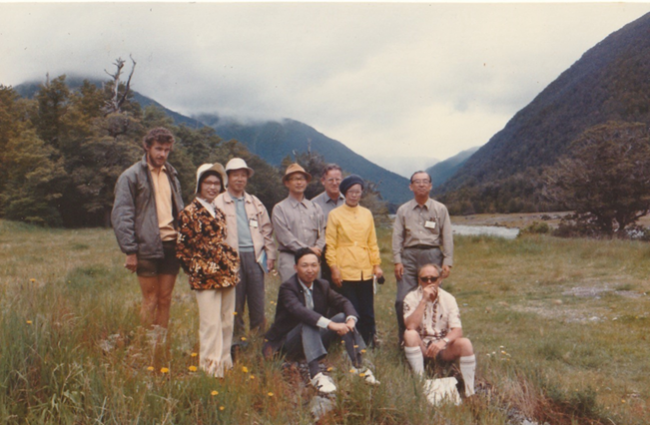
1973 INQUA Late Quaternary field excursion group, including Prof Yoko Ota (yellow jacket) and fieldtrip leaders Gerald Lensen (bottom right) and Peter Wood (top left). At Marble Hill, Maruia River on the scarp of the Alpine Fault.
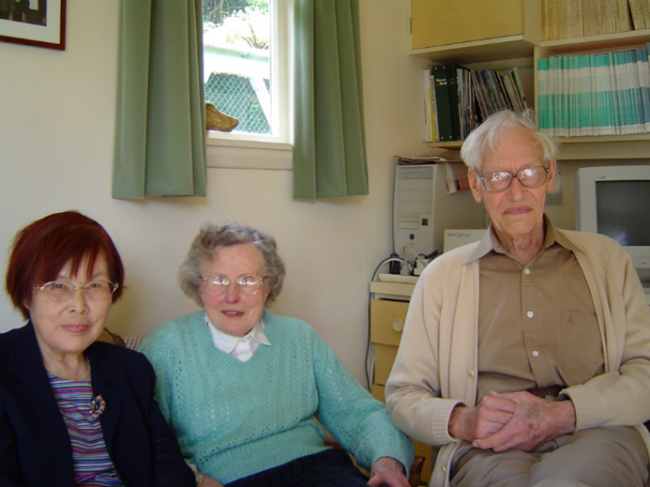
1974 Yoko, with Daphne and Pat Suggate (newly appointed Director of NZ Geological Survey) at home in Khandallah.
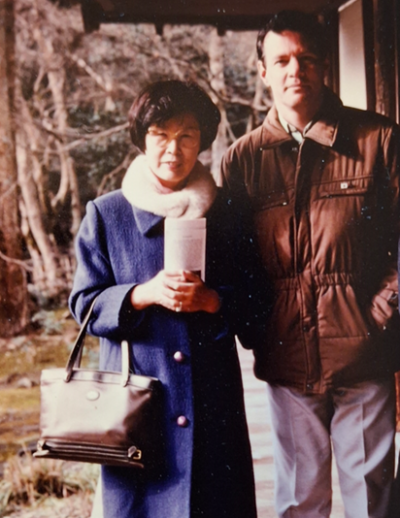
1985. Yoko hosting Denis Williams (ex of NZ Geological Survey) in Tokyo.
In addition to extensive studies across all of Japan and in New Zealand and Taiwan as noted above, Yoko is remembered for her significant contributions to science and collegial friendships in Italy with INQUA connections, in USA assessing the co-seismic subsided marshes adjacent to the Cascadia subduction zone with Alan Nelson, in Australia and Papua New Guinea with John Chappell, Brad Pillans, and Kelvin Berryman, in Canada with John Clague and in Chile with Roland Paskoff.
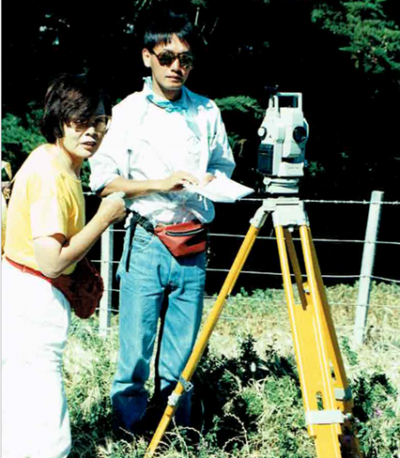
Surveying geomorphic features at Lake Grassmere with colleague Takahiro Miyauchi (1992).
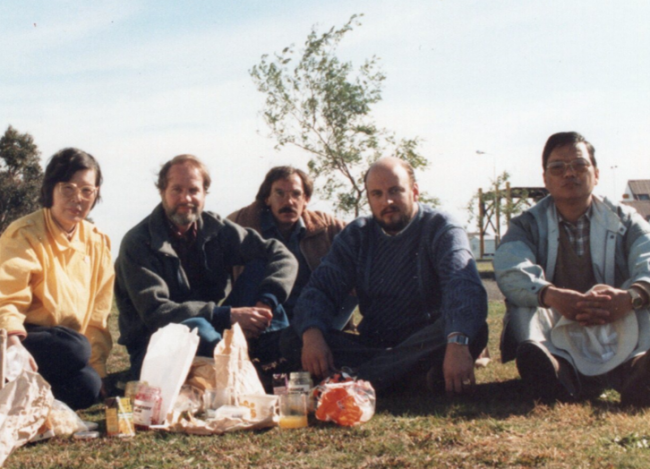
Lunch break IGCP 206 fieldtrip in NZ 1995. L to R Yoko, Bob Bucknam (US Geological Survey), Kelvin Berryman (NZ Geological Survey), unknown, Atsumasa Okada (Kyoto University).
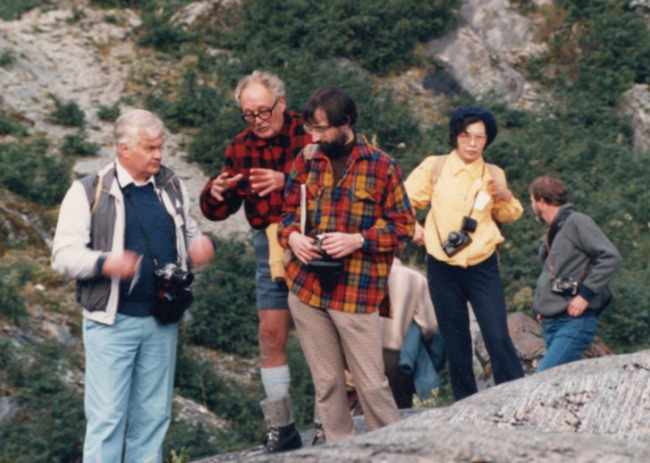
IGCP 206 fieldtrip in NZ 1995. L to R: Paul Hancock (University of Bristol), Gerald Lensen (retired NZ Geological Survey), John Adams (Geological Survey of Canada), Yoko, Bob Bucknam (US Geological Survey).
Yoko was a teenager during the second world war and experienced the difficult times that followed post-war Japan. But Yoko was not one to dwell on the past. She was always focussed on current and new scientific advances and the opportunities they presented for improved understanding of the recent tectonic record. Despite her small stature, quiet and somewhat reserved public persona, Yoko possessed a fierce determination to systematically collect good data and interpret these data in the wider context of past earthquakes and future hazard potential. This determination, inner strength, and powerful work ethic were likely the source of her professional success. The only things that Yoko did not like were electric fences, eels, and the taste of tomatoes!
Throughout her career, she encouraged and mentored many young New Zealand, Japanese and Taiwanese scientists, particularly young women. Her field skills were excellent, and she embraced the diversity of additional skills in her colleagues to interpret the paleoenvironments and paleoecology of the uplifted marine and estuarine sediments exposed along New Zealand coastlines and estuaries. During Yoko’s world travels she often stayed in her colleague’s homes and was always a delightful house guest. In response, many colleagues and their families were honoured guests in Yoko’s apartment in Minami-ku, Tokyo – an unusual experience in Japan. She and her husband Usamu (and her spoiled cats) provided many of us with a wonderful and unique insight into ordinary Japanese life and society.
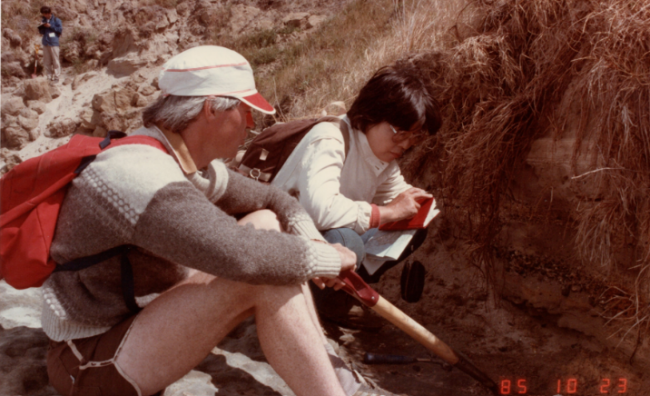
Coastal outcrop mapping Terawhiti, 1985. Alan Hull and Yoko.
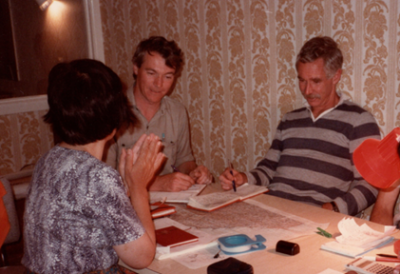
Reviewing the day’s work, Terawhiti,1985. Yoko, Alan Hull and Len Brown
A testament to Yoko’s global scientific contribution are the awards she received.
- Honorary Fellow of the Royal Society of New Zealand in 1998 – first Japanese woman to be awarded this honour
- Prize of the Japanese Society for the Study of Active Faults in 2009
- Honorary life fellow of International Union for Quaternary Research (INQUA) in 2011
- Award from the Geographical Society of Japan for her academic research in 2013
- Fellowship of the Japan Geosciences Union 2015 - For outstanding contributions to Quaternary science and geomorphology, in particular to the geomorphological reconstruction of tectonic processes and sea level changes in the Circum- Pacific region. Co-awardee as the first female Fellows of the JGU.
Yoko leaves a legacy of prolific, life-long scientific research, publication, and mentoring of colleagues from many cultures. We are grateful that she chose New Zealand as a place to work, teach, and collaborate for more than 30 years.
Yoko’s New Zealand publications:
Ota, Y. 1977. Quaternary Studies in New Zealand with Special Reference to the Study of Sea-Level Records. The Quaternary Research (Daiyonki-Kenkyu), 15(4), pp.141-155.
Yoshikawa, T., Ota, Y., Yonekura, N., Okada, A., Iso, N. 1980. Marine terraces and their tectonic deformation on the northeast coast of the North Island, New Zealand. Geographical review of Japan, 53(4), pp.238-262
Ota, Y., Williams, DN., Berryman, KR. 1981. Parts sheets 027, B27 & R28—Wellington 1st ed., Late Quaternary tectonic map of New Zealand 1: 50 000 with notes. DSIR
Iso, N., Okada, A., Ota, Y. and Yoshikawa, T. 1982. Fission-track ages of late Pleistocene tephra on the Bay of Plenty coast, North Island, New Zealand. New Zealand journal of geology and geophysics, 25(3), pp.295-303.
Ota, Y., Yoshikawa, T., Iso, N., Okada, A., Yonekura, N. 1984. Marine terraces of the Conway coast, South Island, New Zealand. New Zealand journal of geology and geophysics, 27(3), pp.313-325.
Ota, Y., Hull, AG., Berryman, KR. 1987. Holocene coastal tectonics of eastern North Island, New Zealand. A preliminary report on late Quaternary seismo-tectonic movement in the Circum Pacific area, 1st survey (1985/1986).
Yoshikawa, T., Ikeda, Y., Iso, N., Moriya, I., Hull, A.G., Ota, Y. 1988. Origin and age of erosion surfaces in the upper drainage basin of Waiapu River, northeastern North Island, New Zealand. New Zealand Journal of Geology and Geophysics, 31(1), pp.101-109.
Ota, Y.; Beanland, S.; Berryman, K. R.; Nairn, I. A. 1988: The Matata Fault: active faulting at the northwestern margin of the Whakatane Graben, eastern Bay of Plenty. New Zealand Geological Survey record 35: 6-13.
Ota, Y., Berryman, KR., Hull, AG., Miyauchi, T., Iso, N. 1988. Age and height distribution of Holocene transgressive deposits in eastern North Island, New Zealand, Palaeogeogr. Palaeoclimatol. Palaeoecol., 68, 135 – 151
Ota, Y., Berryman, K.R., Brown, L.J. and Kashima, K., 1989. Holocene sediments and vertical tectonic downwarping near Wairoa, northern Hawke's Bay, New Zealand. New Zealand Journal of Geology and Geophysics, 32(3), pp.333-341.
Berryman, K.R., Ota, Y. and Hull, A.G., 1989. Holocene paleoseismicity in the fold and thrust belt of the Hikurangi subduction zone, eastern North Island, New Zealand. Tectonophysics, 163(3-4), pp.185-195.
Miyauchi, T., Ota, Y. and Hull, A.G. 1989. Holocene marine terraces and tectonic uplift in the Waimarama coastal plain, eastern North Island, New Zealand. New Zealand Journal of Geology and Geophysics, 32(4), pp.437-442.
Ota, Y., Omura, A., Iwata, H., 1989. 230Th-238U age of Rotoehu Ash and its implications for marine terrace chronology of eastern Bay of Plenty, New Zealand. New Zealand journal of geology and geophysics, 32(3), pp.327-331.
Ota, Y., Berryman, KR., Hull, AG., Fellows, DL., Ishibashi, K., Iso, N., Miyauchi, T., Miyoshi, M., Yamashina, K. 1990. Sections and Profiles for the study of Holocene coastal tectonics, Gisborne—Cape Palliser, North Island, New Zealand, Rec. New Zeal. Geol. Surv. 42, 114 pp
Ota, Y., Miyauchi, T., Hull, AG. 1990. Holocene marine terraces at Aramoana and Pourerere, Eastern North Island, New Zealand. New Zealand Journal of Geology and Geophysics, 33(4), pp.541-546.
Ota, Y., A. G. Hull, AG., Berryman, KR. 1991. Coseismic uplift of Holocene marine terraces in the Pakarae River area, Eastern North Island, New Zealand, Quat. Res., 35, 331–346.
Berryman, K.R., Ota, Y. and Hull, A.G. 1992. Holocene evolution of an estuary on a tectonically rising coast: the Pakarae River locality, eastern North Island, New Zealand. Sedimentary geology, 80(3-4), pp.151-165.
Berryman, K.R., Ota, Y. and Hull, A.G. 1992. Holocene coastal evolution under the influence of episodic tectonic uplift: examples from New Zealand and Japan. Quaternary International, 15, pp.31-45.
Ota, Y., Hull, A.G., Iso, N., Ikeda, Y., Moriya, I. and Yoshikawa, T. 1992. Holocene marine terraces on the northeast coast of North Island, New Zealand, and their tectonic significance. New Zealand Journal of Geology and Geophysics, 35(3), pp.273-288.
Ota, Y., Brown, L.J., Berryman, K.R., Fujimori, T., Miyauchi, T., Beu, A.G., Kashima, K. and Taguchi, K. 1995. Vertical tectonic movement in northeastern Marlborough: stratigraphic, radiocarbon, and paleoecological data from Holocene estuaries. New Zealand journal of geology and geophysics, 38(3), pp.269-282.
Ota, Y., Pillans, B., Berryman, K., Beu, A., Fujimori, T., Miyauchi, T., Berger, G., Beu, AG., Climo, FM. 1996. Pleistocene coastal terraces of Kaikoura peninsula and the Marlborough coast, South Island, New Zealand. New Zealand Journal of Geology and Geophysics, 39(1), pp.51-73.
Berryman, K., Marden, M., Eden, D., Mazengarb, C., Ota, Y. and Moriya, I. 2000. Tectonic and paleoclimatic significance of Quaternary river terraces of the Waipaoa River, east coast, North Island, New Zealand. New Zealand Journal of Geology and Geophysics, 43(2), pp.229-245.
Ota, Y., 2004. Comparison of topographic maps and detection of tectonic landforms using various maps and photographs: Examples from Japan, Taiwan, New Zealand and North-western USA. Map, Journal of the Japan Cartographers Association, 42(2), pp.31-41.
Ota, Y., Yamaguchi, M. 2004. Holocene coastal uplift in the western Pacific Rim in the context of late Quaternary uplift. Quaternary International, 120(1), pp.105-117.
Berryman, K., Ota, Y., Miyauchi, T., Hull, A., Clark, K., Ishibashi, K., Iso, N. and Litchfield, N. 2011. Holocene paleoseismic history of upper-plate faults in the southern Hikurangi subduction margin, New Zealand, deduced from marine terrace records. Bulletin of the Seismological Society of America, 101(5), pp.2064-2087.
By Berryman, K; Hull, A, Williams, D; Wood, P. 2024.
